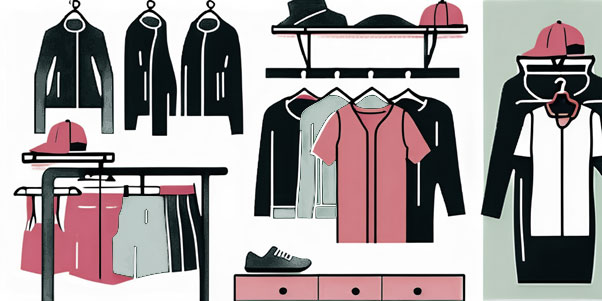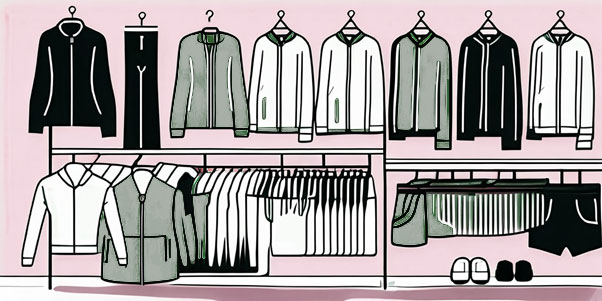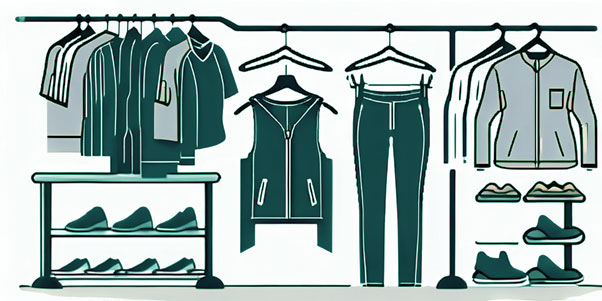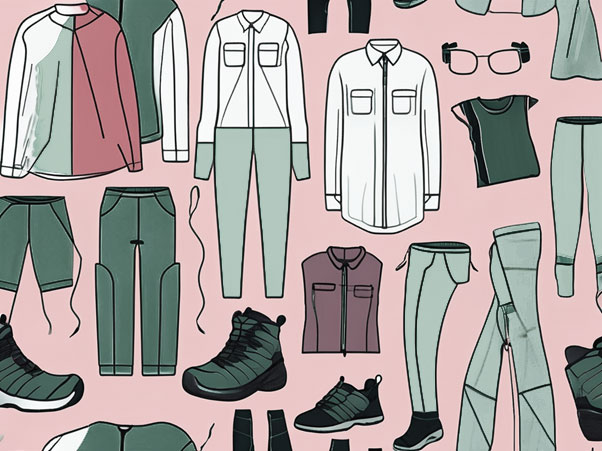Clothing plays a vital role in our daily lives, not only serving as a means of protection and self-expression, but also greatly influencing our comfort and confidence. For the elderly and disabled, who often face unique challenges in their daily routines, the importance of comfortable clothing cannot be overstated. Adaptive clothing, specially designed to address the specific needs of individuals with disabilities or limited mobility, serves as a lifeline, enhancing their daily comfort and preserving their dignity.
The Importance of comfortable clothing in daily life
Comfortable clothing is crucial for individuals of all ages and abilities. It allows us to move freely, engage in activities, and perform basic tasks without unnecessary discomfort or hindrance. For the elderly and disabled, who may experience pain, stiffness, or difficulty in dressing themselves, the right kind of clothing can make all the difference in their quality of life.
Ill-fitting or restrictive clothing can exacerbate physical challenges, causing unnecessary strain on joints, muscles, and pressure points. On the other hand, adaptive clothing, designed with features such as easy closures, adjustable fastenings, and stretchable fabrics, can alleviate these issues, offering a comfortable and practical solution for daily wear.
Specific features for adaptive clothing
Let’s take a closer look at some of the specific features that make adaptive clothing so beneficial for individuals with mobility or dexterity limitations. One important aspect is the use of easy closures instead of traditional buttons or sippers. These closures make it easier for individuals with limited hand dexterity to dress and undress themselves independently, promoting a sense of autonomy and self-confidence.
In addition to easy closures, adaptive clothing often incorporates adjustable fastenings. These allow the wearer to customise the fit of the garment, ensuring maximum comfort and preventing any unnecessary pressure or tightness. For example, adjustable waistbands or straps can be loosened or tightened as needed, accommodating fluctuations in body size or shape throughout the day.
Understanding the challenges faced by the elderly and disabled
Before delving into the benefits of adaptive clothing, it is essential to understand the specific challenges faced by the elderly and disabled. Aging brings its own set of physical limitations, including reduced strength, flexibility, and dexterity. As individuals grow older, simple tasks that were once effortless can become increasingly difficult. The loss of strength and flexibility can make it challenging to reach behind the back or raise arms above the head, making traditional clothing with its complex buttons, sippers, and small openings a daunting obstacle.

Furthermore, individuals with disabilities may have mobility, sensory, or cognitive impairments, all of which can impact their ability to dress themselves independently. Limited mobility can make it difficult to bend, twist, or stretch, hindering the process of putting on or taking off clothes. Sensory impairments, such as reduced tactile sensitivity, can make it hard to feel the fabric or locate the openings. Cognitive impairments, such as memory loss or difficulty with sequencing, can make it challenging to remember the steps involved in dressing or to properly fasten buttons and sippers.
The difference to traditional adaptive clothing
Traditional clothing, with its complex buttons, sippers, and small openings, can often prove daunting and frustrating for these individuals. Simple tasks like putting on a shirt or fastening a pair of pants can become overwhelming and time-consuming. This not only affects their personal independence but can also lead to feelings of frustration and embarrassment. The struggle to dress oneself can impact an individual’s self-esteem and overall well-being, as it may highlight their limitations and reinforce a sense of dependence on others.
Adaptive clothing design for special needs
Recognising these challenges, the need for adaptive clothing becomes evident. Adaptive clothing is specifically designed to address the unique needs of the elderly and disabled. It incorporates features such as easy-to-use closures, adjustable fastenings, and strategically placed openings to simplify the dressing process. By eliminating complex buttons and sippers, adaptive clothing allows individuals to dress themselves with greater ease and independence.
Comfort and dignity for the wearer
Moreover, adaptive clothing takes into account the comfort and dignity of the wearer. The fabrics used are often soft, breathable, and stretchable, providing a comfortable fit and reducing the risk of skin irritation. The designs are also mindful of any physical limitations, ensuring that the clothing does not restrict movement or cause discomfort.
Overall, adaptive clothing plays a crucial role in enhancing the quality of life for the elderly and disabled. By addressing the challenges they face in dressing, it promotes independence, boosts self-confidence, and restores a sense of dignity. With adaptive clothing, individuals can regain control over their personal style and express their individuality, allowing them to navigate their daily lives with greater ease and comfort.
Exploring the concept of adaptive clothing
Adaptive clothing is a specialised form of clothing designed to overcome the challenges faced by the elderly and disabled. By incorporating innovative design features, it aims to simplify the process of dressing and enhance the wearer’s comfort and independence. Adaptive clothing is designed with the needs of the wearer in mind, ensuring their dignity remains intact while providing practical solutions for daily dressing routines.
Key features of adaptive clothing
Key features of adaptive clothing include easy closures that replace traditional buttons and sippers. This allows for quick and effortless dressing, minimising frustration, and discomfort. Adaptive clothing also often incorporates adjustable fastenings, such as elastic waistbands or straps, to accommodate changes in body size or shape. Additionally, the use of soft and breathable fabrics ensures comfort throughout the day.
One of the most important aspects of adaptive clothing is its ability to promote independence and self-confidence. By removing the barriers that traditional clothing can pose, adaptive clothing empowers individuals to dress themselves without relying on assistance from others. This not only saves time and effort but also allows individuals to maintain a sense of autonomy and control over their own appearance.
Furthermore, adaptive clothing is not only functional but also stylish. Gone are the days when adaptive clothing was limited to dull and unattractive designs. Today, adaptive clothing brands are embracing fashion-forward aesthetics, offering a wide range of trendy and fashionable options. From adaptive jeans with discreet elastic waistbands to adaptive dresses with hidden magnetic closures, there is now a plethora of stylish choices available for individuals who require adaptive clothing.
Another important aspect to consider is the impact of adaptive clothing on the mental well-being of the wearer. The ability to dress oneself independently can have a significant positive effect on an individual’s self-esteem and overall mood. It allows them to feel a sense of accomplishment and pride in their ability to overcome physical challenges. This boost in confidence can have a ripple effect on other aspects of their lives, leading to increased social engagement and overall well-being.
Enhancing mobility and ease of dressing with adaptive clothing
Mobility is a vital aspect of daily life, and it should not be hindered by clothing choices. Adaptive clothing recognises the importance of unrestricted movement and offers features that enhance mobility and ease of dressing.

For individuals using mobility aids, such as wheelchairs or walkers, adaptive clothing offers solutions tailored to their needs. Open-back designs and side openings allow for seamless transfers and make dressing from a seated position significantly easier. This eliminates the need for strenuous bending, stretching, or twisting, reducing strain on both the wearer and their caregiver.
Addressing specific needs: Adaptive clothing for different disabilities
Adaptive clothing is not a one-size-fits-all solution; it caters to the diverse needs of individuals with different disabilities. Clothing adaptations can be tailored to specific disabilities, ensuring optimal functionality and comfort for each wearer.

For individuals with limited dexterity or strength in their hands, adaptive clothing may feature larger buttons, magnetic closures, or loop fasteners. These modifications make gripping and fastening easier, allowing for greater independence in dressing.
Individuals with sensory sensitivities, such as those with autism spectrum disorders, may find traditional clothing uncomfortable due to the texture or tightness. Adaptive clothing offers sensory-friendly options with tags and seams removed, as well as soft and stretchable fabrics that minimise irritation and discomfort.
Overcoming stigma: The psychological benefits of Adaptive clothing
In addition to the physical benefits, adaptive clothing also offers significant psychological advantages for the elderly and disabled. By addressing the challenges faced in dressing, adaptive clothing helps individuals regain a sense of control and independence over their daily routines.
Wearing clothing that is specifically designed for their needs allows individuals to feel more confident and secure. Adaptive clothing eliminates the worry of wardrobe malfunctions or difficulty in maintaining personal hygiene, reducing social anxiety and promoting self-esteem. The simple act of dressing independently and comfortably can contribute to a positive self-image and improved emotional well-being.
Understanding the psychological benefits of adaptive clothing
The psychological benefits of adaptive clothing extend beyond personal confidence and self-esteem. By enabling individuals to dress more easily and comfortably, adaptive clothing also helps combat feelings of isolation and exclusion. It promotes inclusivity and acceptance, allowing individuals to participate fully in social activities, without the concern of being hindered by their clothing.
Moreover, adaptive clothing can contribute to a positive shift in societal attitudes towards disability and aging. By embracing inclusive clothing options, we challenge stereotypes and promote acceptance of individuals with diverse abilities.
In conclusion, adaptive clothing plays a crucial role in enhancing the daily comfort and dignity of the elderly and disabled. By addressing their specific challenges and needs, adaptive clothing offers practical and inclusive solutions for dressing independently and comfortably. The psychological benefits, such as increased confidence and social inclusion, further emphasise the invaluable role of adaptive clothing in improving the overall quality of life for these individuals.

